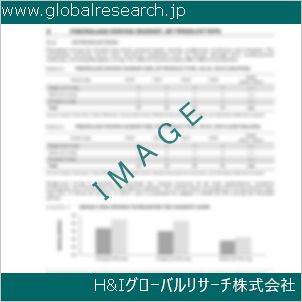Table of Contents
1 Industry Overview of Cyanuric acid
1.1 Definition and Specifications of Cyanuric acid
1.1.1 Definition of Cyanuric acid
1.1.2 Specifications of Cyanuric acid
1.2 Classification of Cyanuric acid
1.3 Applications of Cyanuric acid
1.3.1 Nuclear Application
1.3.2 Non-Nuclear Application
1.4 Industry Chain Structure of Cyanuric acid
1.5 Industry Overview and Major Regions Status of Cyanuric acid
1.5.1 Industry Overview of Cyanuric acid
1.5.2 Global Major Regions Status of Cyanuric acid
1.6 Industry Policy Analysis of Cyanuric acid
1.7 Industry News Analysis of Cyanuric acid
2 Manufacturing Cost Structure Analysis of Cyanuric acid
2.1 Raw Material Suppliers and Price Analysis of Cyanuric acid
2.2 Equipment Suppliers and Price Analysis of Cyanuric acid
2.3 Labor Cost Analysis of Cyanuric acid
2.4 Other Costs Analysis of Cyanuric acid
2.5 Manufacturing Cost Structure Analysis of Cyanuric acid
2.6 Manufacturing Process Analysis of Cyanuric acid
3 Technical Data and Manufacturing Plants Analysis of Cyanuric acid
3.1 Capacity and Commercial Production Date of Global Cyanuric acid Major Manufacturers in 2023
3.2 Manufacturing Plants Distribution of Global Cyanuric acid Major Manufacturers in 2023
3.3 R&D Status and Technology Source of Global Cyanuric acid Major Manufacturers in 2023
3.4 Raw Materials Sources Analysis of Global Cyanuric acid Major Manufacturers in 2023
4 Capacity, Production and Revenue Analysis of Cyanuric acid by Regions, Types and Manufacturers
4.1 Global Capacity, Production and Revenue of Cyanuric acid by Regions 2019-2024
4.2 Global and Major Regions Capacity, Production, Revenue and Growth Rate of Cyanuric acid 2019-2024
4.3 Global Capacity, Production and Revenue of Cyanuric acid by Types 2019-2024
4.4 Global Capacity, Production and Revenue of Cyanuric acid by Manufacturers 2019-2024
5 Price, Cost, Gross and Gross Margin Analysis of Cyanuric acid by Regions, Types and Manufacturers
5.1 Price, Cost, Gross and Gross Margin Analysis of Cyanuric acid by Regions 2019-2024
5.2 Price, Cost, Gross and Gross Margin Analysis of Cyanuric acid by Types 2019-2024
5.3 Price, Cost, Gross and Gross Margin Analysis of Cyanuric acid by Manufacturers 2019-2024
6 Consumption Volume, Consumption Value and Sale Price Analysis of Cyanuric acid by Regions, Types and Applications
6.1 Global Consumption Volume and Consumption Value of Cyanuric acid by Regions 2019-2024
6.2 Global and Major Regions Consumption Volume, Consumption Value and Growth Rate of Cyanuric acid 2019-2024
6.3 Global Consumption Volume and Consumption Value of Cyanuric acid by Types 2019-2024
6.4 Global Consumption Volume and Consumption Value of Cyanuric acid by Applications 2019-2024
6.5 Sale Price of Cyanuric acid by Regions 2019-2024
6.6 Sale Price of Cyanuric acid by Types 2019-2024
6.7 Sale Price of Cyanuric acid by Applications 2019-2024
6.8 Market Share Analysis of Cyanuric acid by Different Sale Price Levels
7 Supply, Import, Export and Consumption Analysis of Cyanuric acid
7.1 Supply, Consumption and Gap of Cyanuric acid 2019-2024
7.2 Global Capacity, Production, Price, Cost, Revenue, Supply, Import, Export and Consumption of Cyanuric acid 2019-2024
7.3 USA Capacity, Production, Price, Cost, Revenue, Supply, Import, Export and Consumption of Cyanuric acid 2019-2024
7.4 EU Capacity, Production, Price, Cost, Revenue, Supply, Import, Export and Consumption of Cyanuric acid 2019-2024
7.5 China Capacity, Production, Price, Cost, Revenue, Supply, Import, Export and Consumption of Cyanuric acid 2019-2024
7.6 Japan Capacity, Production, Price, Cost, Revenue, Supply, Import, Export and Consumption of Cyanuric acid 2019-2024
8 Major Manufacturers Analysis of Cyanuric acid
8.1 Manufacturer One
8.1.1 Company Profile
8.1.2 Product Picture and Specifications
8.1.2.1 Type I
8.1.2.2 Type II
8.1.2.3 Type III
8.1.3 Capacity, Production, Price, Cost, Gross and Revenue
8.1.4 Contact Information
8.2 Manufacturer Two
8.2.1 Company Profile
8.2.2 Product Picture and Specifications
8.2.2.1 Type I
8.2.2.2 Type II
8.2.2.3 Type III
8.2.3 Capacity, Production, Price, Cost, Gross and Revenue
8.2.4 Contact Information
8.3 Manufacturer Three
8.3.1 Company Profile
8.3.2 Product Picture and Specifications
8.3.2.1 Type I
8.3.2.2 Type II
8.3.2.3 Type III
8.3.3 Capacity, Production, Price, Cost, Gross and Revenue
8.3.4 Contact Information
8.4 Manufacturer Four
8.4.1 Company Profile
8.4.2 Product Picture and Specifications
8.4.2.1 Type I
8.4.2.2 Type II
8.4.2.3 Type III
8.4.3 Capacity, Production, Price, Cost, Gross and Revenue
8.4.4 Contact Information
8.5 Manufacturer Five
8.5.1 Company Profile
8.5.2 Product Picture and Specifications
8.5.2.1 Type I
8.5.2.2 Type II
8.5.2.3 Type III
8.5.3 Capacity, Production, Price, Cost, Gross and Revenue
8.5.4 Contact Information
…
9 Marketing Trader or Distributor Analysis of Cyanuric acid
9.1 Marketing Channels Status of Cyanuric acid
9.2 Traders or Distributors with Contact Information of Cyanuric acid by Regions
9.3 Ex-work Price, Channel Price and End Buyer Price Analysis of Cyanuric acid
9.4 Regional Import, Export and Trade Analysis of Cyanuric acid
10 Industry Chain Analysis of Cyanuric acid
10.1 Upstream Major Raw Materials Suppliers Analysis of Cyanuric acid
10.1.1 Major Raw Materials Suppliers with Contact Information Analysis of Cyanuric acid
10.1.2 Major Raw Materials Suppliers with Supply Volume Analysis of Cyanuric acid by Regions
10.2 Upstream Major Equipment Suppliers Analysis of Cyanuric acid
10.2.1 Major Equipment Suppliers with Contact Information Analysis of Cyanuric acid
10.2.2 Major Equipment Suppliers with Product Pictures Analysis of Cyanuric acid by Regions
10.3 Downstream Major Consumers Analysis of Cyanuric acid
10.3.1 Major Consumers with Contact Information Analysis of Cyanuric acid
10.3.2 Major Consumers with Consumption Volume Analysis of Cyanuric acid by Regions
10.4 Supply Chain Relationship Analysis of Cyanuric acid
11 Development Trend of Analysis of Cyanuric acid
11.1 Capacity, Production and Revenue Forecast of Cyanuric acid by Regions and Types
11.1.1 Global Capacity, Production and Revenue of Cyanuric acid by Regions 2024-2029
11.1.2 Global and Major Regions Capacity, Production, Revenue and Growth Rate of Cyanuric acid 2024-2029
11.1.3 Global Capacity, Production and Revenue of Cyanuric acid by Types 2024-2029
11.2 Consumption Volume and Consumption Value Forecast of Cyanuric acid by Regions, Types and Applications
11.2.1 Global Consumption Volume and Consumption Value of Cyanuric acid by Regions 2024-2029
11.2.2 Global and Major Regions Consumption Volume, Consumption Value and Growth Rate of Cyanuric acid 2024-2029
11.2.3 Global Consumption Volume and Consumption Value of Cyanuric acid by Types 2024-2029
11.2.4 Global Consumption Volume and Consumption Value of Cyanuric acid by Applications 2024-2029
11.3 Supply, Import, Export and Consumption Forecast of Cyanuric acid
11.3.1 Supply, Consumption and Gap of Cyanuric acid 2024-2029
11.3.2 Global Capacity, Production, Price, Cost, Revenue, Supply, Import, Export and Consumption of Cyanuric acid 2024-2029
11.3.3 USA Capacity, Production, Price, Cost, Revenue, Supply, Import, Export and Consumption of Cyanuric acid 2024-2029
11.3.4 EU Capacity, Production, Price, Cost, Revenue, Supply, Import, Export and Consumption of Cyanuric acid 2024-2029
11.3.5 China Capacity, Production, Price, Cost, Revenue, Supply, Import, Export and Consumption of Cyanuric acid 2024-2029
11.3.6 Japan Capacity, Production, Price, Cost, Revenue, Supply, Import, Export and Consumption of Cyanuric acid 2024-2029
12 New Project Investment Feasibility Analysis of Cyanuric acid
12.1 New Project SWOT Analysis of Cyanuric acid
12.2 New Project Investment Feasibility Analysis of Cyanuric acid
13 Conclusion of the Global Cyanuric acid (CAS 108-80-5) Industry 2024 Market Research Report
| ※参考情報 シアヌル酸(Cyanuric acid)は、化学式C3H3N3O3を持つ有機化合物であり、CAS番号は108-80-5です。この化合物は、特に水処理や農業分野で広く利用されています。シアヌル酸は、主に水の安定剤や農薬の成分として知られていますが、その特性や用途は多岐にわたります。 シアヌル酸は、白色または無色の結晶性固体で、無臭であり、水に溶けにくい特性を持っています。この性質は、特に水処理において重要な役割を果たしています。シアヌル酸は、塩素系消毒剤の効果を保つための安定剤として使用され、特にプールやスパでの塩素の効果を持続させるのに役立っています。シアヌル酸が存在することで、紫外線による塩素の分解を抑制するため、塩素の必要量を削減し、清浄な水を維持するために重要です。 シアヌル酸の種類としては、主に2つの異性体が存在します。シアヌル酸自体が一般的に知られている異性体であり、もう一方はメラミンです。メラミンは、シアヌル酸と同じ窒素を含むが、異なる構造を持ち、主に樹脂やプラスチックの材料として使用されています。シアヌル酸は、その化学構造から、特に水中での安定性に優れており、水処理分野での特異な役割を担っています。 シアヌル酸の用途は広範囲にわたり、特に水処理に関連する分野で多く用いられています。プールやスパにおいて、塩素消毒剤の効果を持続させるために使用され、その効果を高める役割を果たします。また、農業では、農薬の成分として、植物の成長を助けるための肥料や成長促進剤として利用されることがあります。これにより、作物の収量を増加させることが期待されます。 さらに、シアヌル酸は、様々な工業用途にも利用されています。たとえば、試薬として化学分析に使用されたり、特定の化合物の合成において中間体として機能したりします。また、製造業においては、防腐剤や洗浄剤としても注目されています。 シアヌル酸の関連技術としては、その安定剤としての機能を最大限に引き出すための研究開発が行われています。特に、ナノテクノロジーを用いた新たな水処理技術が注目されており、シアヌル酸を利用したナノ材料が研究されています。これにより、より効率的な水処理や消毒が可能になることが期待されています。 また、シアヌル酸の環境への影響に関する研究も進んでおり、水質保護や生態系への影響を最小限に抑えるための取り組みがなされています。シアヌル酸が水中でどのように分解されるか、またその分解生成物が生態系に及ぼす影響を評価することは、持続可能な水利用を確保する上で重要な課題となっています。 このように、シアヌル酸はその特有の物理的および化学的性質から多様な分野で利用されており、今後もその適用範囲は拡大することが予想されます。水処理技術や農業における効果的な資材としての地位を確立し、さらには新たな技術の開発に寄与することで、持続可能な社会への貢献が期待されます。シアヌル酸は、私たちの生活の一部としてさまざまな場面でその価値を発揮している化合物です。 |
❖ 免責事項 ❖
http://www.globalresearch.jp/disclaimer












